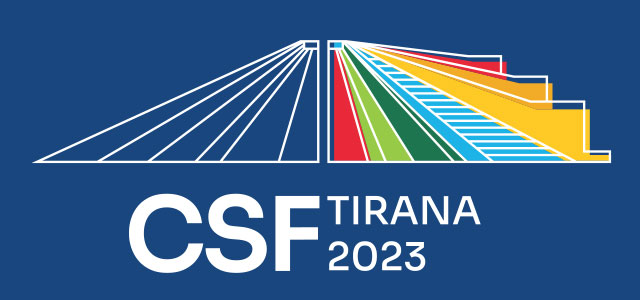Why the Berlin Process is still needed?

The starting point is: both the Western Balkans and the European Union need the Berlin Process. It will certainly be needed until the moment when Montenegro and Serbia approach the conclusion of most negotiating chapters, Albania and Macedonia make significant steps forward in their EU accession negotiations and Bosnia and Herzegovina and Kosovo reach the negotiations’ opening. Therefore, the need for this auxiliary mechanism shall exist for at least four years more, until all its results are absorbed and placed on the main track of the region’s EU integration.
What results are we talking about?
First, the initial Declaration by the Chair which launched the Berlin Process in 2014 in Berlin posed it very broadly. German Chancellor Angela Merkel presented a sort of guidelines for action in the region to the high Western Balkan officials, the EU representative and high representatives of four member states. These guidelines created the basis for all other steps within the process – from the subsequent summit in Vienna, via Paris, to Trieste. Each of the summits filled in the general framework defined in Berlin, with a particular emphasis on specific fields in accordance with the priorities of the countries hosting the process at the given moment – in Berlin the Connectivity Agenda was launched; in Vienna, the importance of neighbourhood relations and civil society was underlined; in Paris – climate changes and fight against terrorism; in Trieste, it was the enhancement of small and medium enterprises, trade and investments and fight against corruption and organized crime. The topic of youth stretched throughout the summits, with the topic of regional reconciliation drifting somewhere in the background. All this could in one way or another be incorporated into the accession negotiations; however, the time factor became critical in the region whereas the EU membership is still far away. For that reason, the activities, meetings, declarations, takeover of obligations, monitoring, reporting, establishment of new institutions such as the Regional Youth Cooperation Office (RYCO) or the Western Balkans Chamber Investment Forum (WB CIF) brought a new and much needed dynamics onto the regional scene. This is true both for the activities focused only on the region and on the improvement of regional cooperation and for those extended to the EU, as was the case with the Connectivity Agenda which should not only establish or renovate and modernize the intra-regional infrastructural connections but also link them to the European transport and energy corridors.
Second, the Berlin Process has been developed as a new provisional mechanism based on previous efforts and well established cooperation of several regional initiatives like Regional Cooperation Council (RCC), South East European Transport Observatory (SEETO), and Energy Community (EnC) in the area covered by the Connectivity Agenda. Following the adoption of the Consolidated Multi-annual Action Plan for a Regional Economic Area in the Western Balkans Six (REA), at the Trieste Summit in July 2017, which aimed at developing an area where goods, services, investments and skilled workers can move without obstacles, boosting Western Balkans economic attractiveness and accelerating convergence with the EU, a couple of other regional initiatives were involved in the implementation of this new “branch” of the Berlin Process like Central European Free Trade Agreement 2006 (CEFTA 2006), South East European Center for Entrepreneurial Learning (SEECEL), newly created Western Balkans Chamber Investment Forum (WB CIF) and many other EU and international organizations and financial institutions. The work of regional initiatives has thus become more visible and tasks more ambitious. In addition, their activities became more coordinated following the experience with the South East Europe 2020, a common strategy of the Western Balkan Six for the integrated, smart, sustainable and inclusive growth, based on good governance.
Third, the advantage of the Berlin Process in comparison to the Stabilisation and Association Process, as the main framework of the EU – Western Balkans dialogue, is its absolutely dominant regional approach. The EU has bilateral negotiations with all Western Balkan countries with relatively minor regional dimension of the Instrument for Pre-accession Assistance (IPA), a number of specific sectoral projects with the region and occasionally, some meetings at the ministerial level with all WB6 participants. Thus, the Berlin Process reaffirmed at the highest level, and with support of several key EU Member States, the relevance of regional cooperation in the Western Balkans.
Fourth, regional cooperation has been emphasized as the precondition for faster development and not only as the precondition for the successful conclusion of the accession negotiations. The high gap in the average level of GDP in the WB versus the EU average is one of the big obstacles to the EU integration of the region, and that has been mentioned more often in last few years. This combination of regional and developmental package is thus an important contribution of the Berlin Process to the accelerating convergence of the WB with the EU, but also to the underlining main ways and means for bringing prosperity to the region.
Regardless of how superficial and sporadic, the information about the Berlin Process turned out to be more accessible for the broad public than the information on the EU accession process which both the European Union and the countries of the region have been insufficiently attempting to popularize in all these years since the launching of the Stabilisation and Association Process in 1999. Rather spectacular announcement of the Connectivity Agenda, traffic-related stories well known to everybody in the region, proclamations of accelerated reforms in the transportation policy (soft measures), various geographic maps with priority corridors in daily and weekly press and political statements from the top levels of governments in the region – all this very soon brought this narrative close to the expert and broader public. Later discussions even included the issues of financing, the manner and speed for facilitating the transit across numerous borders, condition of vehicles and trains, as well as whether the existing roads would be modernized or the new ones built, and how long it should be waited for them to become profitable when there were neither commodities nor travellers because the privatization had left most of industry crippled and most of the people too poor to travel often. These topics moved downwards even reaching the kafana (pub) tables, in difference from negotiating chapters, where only the Chapter 35 enjoyed a disproportional publicity due to the imperative of normalization of the Belgrade-Prishtina relations as a condition for its eventual closure.
The Berlin Process obviously filled in the void which existed in the EU-Western Balkans relations. This void was hurriedly occupied by others – Russia, Turkey, the Gulf states and China – the last one came with a tremendous gust, large portfolio and rich funds. Since poor Balkan countries do not have much choice, everything that is offered is being accepted without too much hesitation. The far European future is rather a counter-argument than an argument for limiting these countries’ assistance and role, in spite of the undoubtedly primary role which the EU has in trade, investments and developmental assistance, as well as in educational, scientific and cultural cooperation. This is not even closely enough to overcome the development gap between the new aspirants and the member-states. Hence the Berlin Process is still needed, together with recent ideas about wider assistance, including the ideas about the foundation of a development fund (and why not a development bank?) for the Western Balkans, or about an increased EU activity in providing higher visibility and soft power in the region.
Jelica Minić, President of the Forum for International Relation of the European Movement in Serbia
